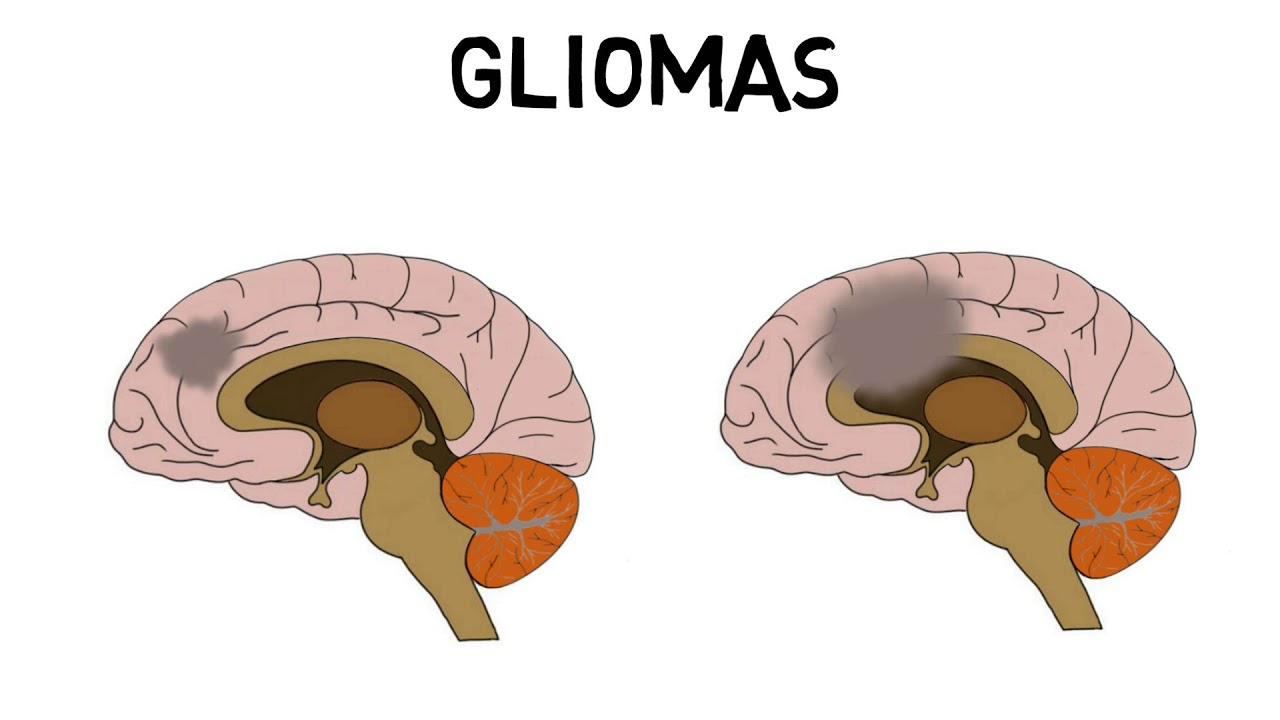A glioma is a tumor that originates in the glial cells of the brain or spinal cord. Gliomas are usually cancerous, but they can also be benign. They can arise alone or in conjunction with other primary cancers of the central nervous system (CNS). The World Health Organization (WHO) Collaborating Center for Brain Tumor Research at Duke University Medical Center created the histological subclassification of gliomas. The term glioma refers to a tumor that develops from the nervous system’s glial cells, which are supportive and protective in nature. Gliomas account for one-third of all primary brain tumors and are more common than any other type of primary malignant brain tumor, accounting for approximately 35% of all central nervous system (CNS) cancers.
A brief history of glioma
Glioma is a kind of tumor that has been known since antiquity. No one knows for certain how long tumors have been occurring in the human body, but the oldest description of a glial tumor is attributed to Hippocrates (c. 460 BCE – c. 370 BCE) and recorded by Galen (129 CE – c. 200 CE). The first evidence that malignant tumors could be cured was during the time of Paracelsus (1493–1541), an early pioneer in chemotherapy who used chemical substances such as gold and arsenic to treat diseases, including cancer. Gliomas make up an estimated 60% of all primary malignant brain tumors and 40% of all intracranial neoplasms. The World Health Organization (WHO) classifies them as grade II or III, depending on the rate at which they grow and invade surrounding tissues. Most gliomas occur in patients aged 50 years or older.
Types of Glioma
There are two major types of gliomas, astrocytoma, and oligodendroglioma.
Astrocytoma
Astrocytomas are the most common type of primary malignant brain tumor in humans. It is a tumor that begins in an astrocyte, which is a supporting cell of the nervous system. Astrocytes function to keep neurons healthy and functioning properly. Digging deeper into this specific type of cancer, you will find that it is mainly found in adults between the ages of 20 and 80 years old with an average age of 59 years old. It arises from cells called glial cells, which are supportive to neurons and found in the central nervous system. Astrocytomas account for 30% of all primary brain tumors in adults and 80% of such tumors in children.
Oligodendroglioma
For many people, the subject of oligodendroglioma is difficult and perplexing. Oligodendrogliomas are a type of brain tumor that develops from oligodendrocytes. Rudolf Virchow discovered them at an autopsy on a man who died unexpectedly in the late 1800s, and they were the first to be named. Oligodendroglioma is a type of cancer that begins in the brain and is most common in those aged 40 to 60. Adult males and women are equally affected by this form of malignancy. The tumor may develop slowly over time or fast, putting additional strain on your brain.
Causes of Glioma
Their cause is unknown, but research points to several factors that may lead to the formation of gliomas. The leading cause of gliomas is radiation exposure. This occurs mostly because it’s hard to know how much radiation a brain receives when a tumor develops. The second biggest cause is genetics. The third reason for this type of tumor is exposure to certain chemicals during the development phase in utero and childhood/adolescence. If you have a family member with a history of brain cancer or head injuries, you’re at a higher risk of developing a glioma.
Symptoms of Glioma
While some grow slowly and cause few or no symptoms, others can grow rapidly and push against surrounding tissues. A tumor that presses on the brain stem or on nerves controlling movement can be life-threatening because it causes severe disability very quickly. The common symptom of a primary glioma is a headache that occurs for no reason or a change in the intensity of headaches you have already been experiencing. The most common symptoms of gliomas include headaches, nausea, vomiting, weakness on one side, or altered vision.
Treatments for Glioma
While some can be cured with surgery, radiation, and chemotherapy, many types are incurable. Treatments have been limited by a lack of understanding of what causes cancer and how to stop it from spreading. In recent years, however, researchers have made progress toward developing new drugs and other treatments that could improve survival rates and quality of life for people diagnosed with gliomas. They can be benign or cancerous. Most gliomas are noncancerous, but this type of tumor can still cause significant damage if left untreated. Glioma treatments vary greatly depending on the size, location, and severity of the tumor.
Prevention of Glioma
The best way to prevent these tumors is to practice good oral hygiene, which includes brushing your teeth twice a day for two minutes each time. You should visit your dentist at least every six months for a checkup. Another effective way to prevent Gilomas is by wearing glasses. Most people have a tendency to play games, watch television or read books with their eyes either focused on the ground or in the air. Because of this, they tend to squint a lot and may not even realize that they are doing it. If you wear glasses, make sure that you take them off before engaging in any of these activities.
In conclusion
It is important to understand that there are various types of gliomas, and thus different treatments. However, the prognosis for most patients with these tumors is poor. Should you have any questions about treatment options or how to care for someone who has been diagnosed with glioma, you can contact your doctor. As a result of this, the outlook is generally poor. However, there are some treatment options available for those diagnosed with glioma, and it is important to seek medical advice as soon as possible after diagnosis. In addition to receiving treatment from your doctor or neurosurgeon, you may also want to consider speaking with a neurologist or psychiatrist about your specific case.








